Real-Time Film Club Report
29 Jun 2014, by Nick IrvinThis past Saturday, Roon and Taeyoon held the first meeting of the Real Time Film Club. I unfortunately could not attend — I was hosting an out-of-town friend, and my schedule was subject to his jetlag. But this morning we met and they recounted the evening to me, and it sounded like a great time. They are happy with how it went.
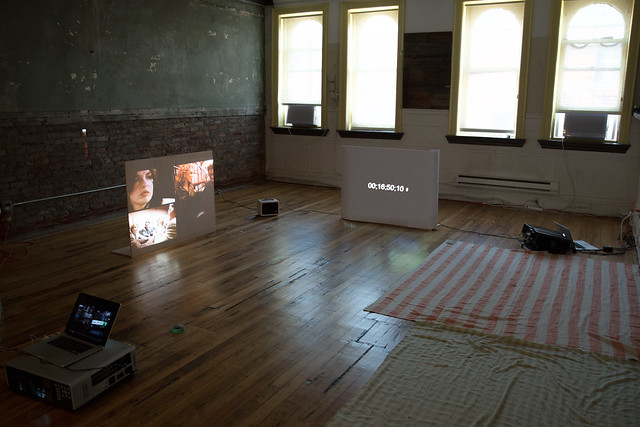
This time around, we wanted a small group of peers to discuss these themes, and there was a great crop of precisely that. There was Jonathan Minard, Lisa Park, and Chris Woebken, among others. Everyone gathered in a circle on the floor, with snacks, next to two projection surfaces that we had set up on the ground. One screen projected the movie Time Code, and the other projected an actual time code in real time. The plan was that the event’s pacing would be dictated by the film’s passing: it would last as long as the movie’s duration. The goal was to conduct “an exercise in simultaneity”: people in space together, synching up for a brief time, and becoming aware of the time they are passing together.
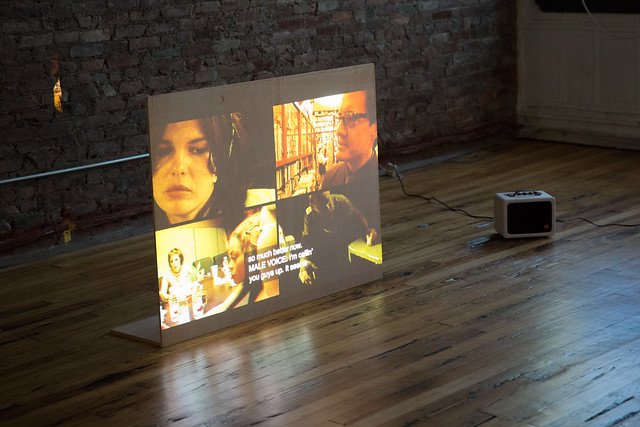
Taeyoon and Roon tell me that one of the biggest surprises was that Time Code was actually enjoyable to watch. We were all worried that it would appear cheesy, but after all our hand-wringing, it sounds like the framing saved the day. The installation, and the way that Taeyoon and Roon decided to introduce it, emphasized the structure of the film over its plot, and that provided a kind of schematic for everyone to think about and work with.
Everyone ate food and watched the first half hour of the movie as the timecode projection tracked their progress. One thing that struck the group was how its ambitions are impossible for one person to fully apprehend: it makes you want to see everything when you definitely never can. In talking about it after, everyone filled in each other’s missing pieces, and they built a shared understanding.
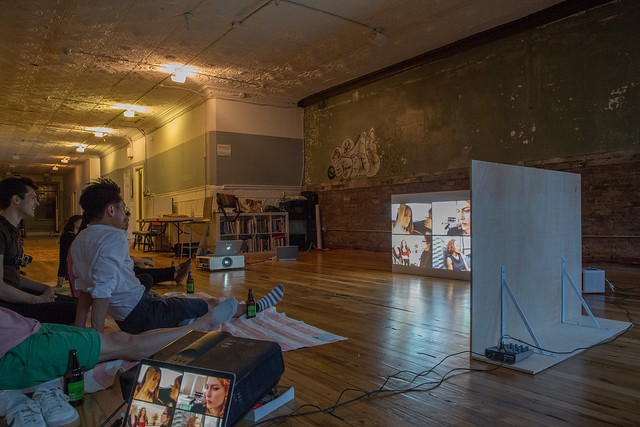
After the screening, everyone hung around for another hour and a half and talked about how these themes fit into their own lives. There was a lot of discussion of real time technology (social media) and the kinds of relationships that it makes possible. What does Gchat enable, and what does a letter enable? How are they different? Does Skype always make you feel closer to a person, or can it sometimes actually emphasize the distance between you? As is so often the case with conversations, this one took a few unexpected and exciting turns. Surveillance was one rather surprising topic — or, more specifically, how surveillance technologies and intimate communications are far closer to one another than we might actually be comfortable with.
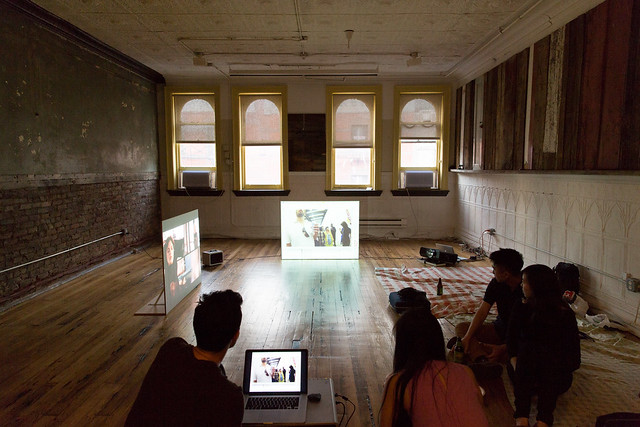
Documentary filmmaker Jonathan’s work brought these questions to challenging territory. He keeps a practice of documenting his own life with a GoPro camera. Halfway through the evening, he showed the footage that he had taken as everyone was arriving. Taeyoon said he felt kind of uncomfortable seeing himself walking up the stairs, just half an hour before, from someone else’s viewpoint. This was one illustration of the kind of “fractured experience” that was a recurring thread throughout the night. He wondered if that kind of footage should exist, but then Roon pointed out how that kind of footage is a cornerstone for how we will remember that evening ten years from now.
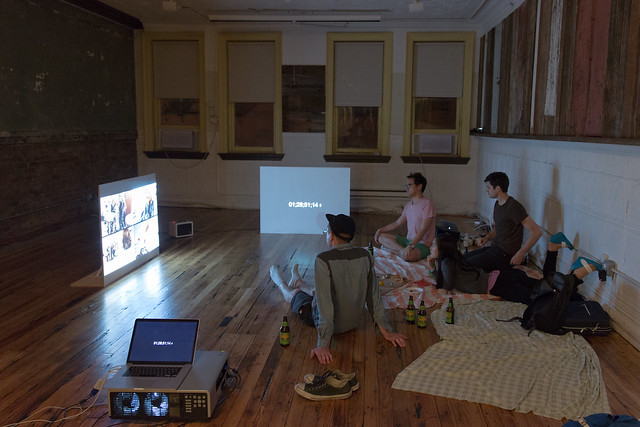
These kinds of tangents are exactly why these kinds of events happen — Taeyoon and Roon hope to enrich the fabric of the project with the ideas and experiences of their peers and collaborators. From what they tell me, this meeting was a very promising start. We’re already talking about how to adapt the formula for the next meetings, and see what kinds of gatherings we can formulate next.






